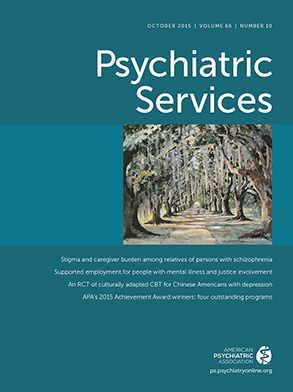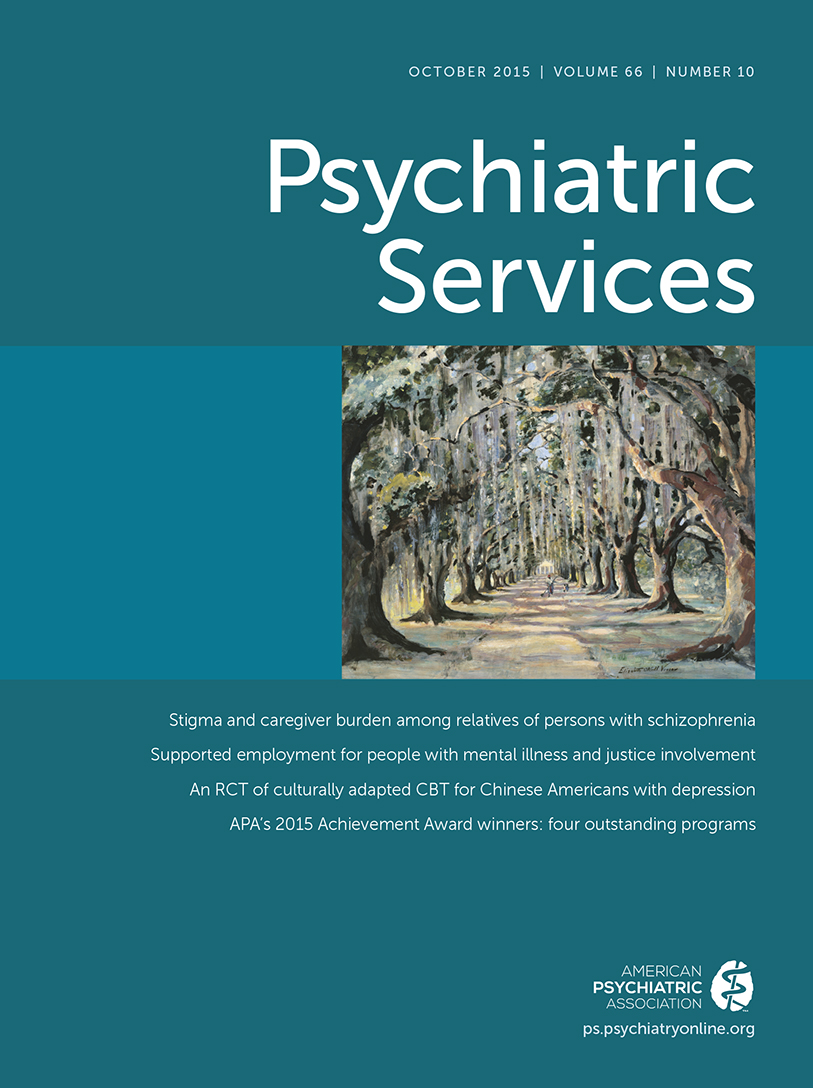National Academies report on mental disorders among low-income children: Since 1975, the Social Security Administration (SSA) has paid Supplemental Security Income (SSI) benefits to children with disabilities who are living in poverty. The program has grown: the percentage of U.S. children under age 18 receiving these benefits increased from 1.4% in 2004 to 1.8% in 2013, and recently about 20% of all SSI payments were to children. Of the approximately 1.3 million children who received SSI benefits in 2013, about half qualified as a result of a mental disorder. To address issues related to the sustainability of the program, the SSA commissioned the National Academies of Sciences, Engineering, and Medicine to examine trends in the prevalence, diagnosis, and treatment of mental disorders among U.S. children and to compare those trends with changes in the SSI program for children. Findings presented in a 394-page report,
Mental Disorders and Disabilities Among Low-Income Children, indicate that although the percentage of U.S. children receiving SSI disability benefits has increased, the proportion receiving benefits as a result of ten major mental disorders decreased, from 54.4% of SSI child beneficiaries in 2004 to 49.5% in 2013. Thus the growth in SSI benefits for children was not due primarily or disproportionately to mental illness, the report concludes. The total number of children who applied for and were allowed to receive SSI benefits as a result of a mental disorder was approximately 10% lower in 2013 than in 2004. Although SSI is a federal program, it is administered at the state level. Considerable state variation was found in the rate at which children receive SSI benefits for mental disorders. The report is available on the National Academies Web site (
iom.nationalacademies.org/Reports/2015/Mental-Disorders-and-Disabilities-Among-Low-Income-Children.aspx).
SAMHSA releases latest NSDUH data: Data summarized in a 64-page report,
Behavioral Health Trends in the United States: Results From the 2014 National Survey on Drug Use and Health, indicate that in 2014, about one in five adults age 18 or older (18.1%, or 43.6 million adults) had any past-year mental illness, and 4.1% of adults (9.8 million) had a serious mental illness. These percentages have remained relatively stable since 2008, when the survey began collecting data on mental illness. About 3.3% of adults with any mental illness and 1.0% of those with serious mental illness in 2014 had a co-occurring substance use disorder. The percentage of Americans age 12 or older who had a past-year substance use disorder in 2014 (8.1%, or 21.5 million people) was similar to the percentages from 2011 to 2013 but lower than those from 2002 to 2010. In 2014, one in ten Americans (10.2%) age 12 or older used an illicit drug in the past 30 days. The 2014 percentage was higher than those in every year from 2002 through 2013—an increase driven primarily by marijuana use and the nonmedical use of prescription pain relievers. Across all age groups, tobacco and cigarette use was lower in 2014 than in most years from 2002 to 2013. For example, about 13.0% of adolescents were current cigarette smokers in 2002, compared with 4.9% in 2014. Underage alcohol use (use among persons age 12 to 20) has declined over time but remains a concern. In 2014, 22.8% of underage Americans were current alcohol users, 13.8% were binge alcohol users, and 3.4% were heavy alcohol users. The NSDUH, which is funded by the Substance Abuse and Mental Health Services Administration (SAMHSA), is an annual face-to-face household survey of the civilian, noninstitutionalized population. The 2014 survey obtained 17,046 interviews with adolescents and 50,855 with adults. The report is available on the SAMHSA Web site (
www.samhsa.gov/data/sites/default/files/NSDUH-FRR1-2014/NSDUH-FRR1-2014.pdf).
New York State expands early intervention services for psychosis: The New York State Office of Mental Health (OMH) has announced expansion of OnTrackNY, a program that provides psychiatric treatment, employment and educational services, and family education and support for young people with newly emerging psychotic symptoms. The state’s OnTrackNY program, which receives $6.75 million in current annual state and federal funding, is an offshoot of one of the two RAISE studies (Recovery After an Initial Schizophrenia Episode) funded by the National Institute of Mental Health. (The July 2015 issue of
Psychiatric Services included a special section on early intervention services that featured reports from RAISE sites in New York.) OnTrackNY began with sites in Brooklyn, Manhattan, Queens, and Yonkers, which serve a total of 160 youths at any given time. OMH announced expansion of the program to five new locations—in Buffalo, Farmingville, Syracuse, and another two in Manhattan—which will serve a total of 175 youths. An additional three OnTrackNY sites are in development for Albany, Rochester, and New York City. OnTrackNY (
practiceinnovations.org/CPIInitiatives/OnTrackNY) is funded by the New York State OMH and SAMHSA.
SAMHSA handbook to help people recover from suicide attempts: SAMHSA is providing free copies of a 34-page booklet designed to help people who have attempted suicide take their first steps toward healing and recovery. The tools and stories contained in the booklet come from the experiences of individuals who have survived a suicide attempt and their supporters. The personal accounts describe life events and other factors leading to the suicide attempt and how these individuals moved toward recovery after the attempt. The booklet outlines small initial steps, such as reestablishing connections with others and finding and working with a counselor. It outlines strategies for overcoming suicidal thoughts and staying safe in challenging times. A workbook section asks questions designed to help the reader develop a safety plan.
A Journey Toward Health and Hope: Your Handbook for Recovery After a Suicide Attempt can be ordered or downloaded from the SAMHSA store (
store.samhsa.gov/product/SMA15-4419).
Kaiser Foundation brief examines Arkansas’ “private option” Medicaid expansion waiver: In September 2013, Arkansas became the first state to secure a federal waiver allowing it to require adults newly eligible for Medicaid under the Affordable Care Act to enroll in private health plans offered through the health insurance marketplace, with the federal government paying the cost through premium assistance. The initiative, often referred to as the “private option,” has allowed Arkansas to cover close to 220,000 Medicaid beneficiaries with commercial provider networks and strengthen its health insurance marketplace. A new issue brief from the Kaiser Family Foundation draws upon early data from the initiative and from private interviews in spring 2015 with state officials, providers, insurance carriers, and consumer advocates. As with more traditional ACA Medicaid expansion in other states, Arkansas’ private option has reduced the uninsured rate among nonelderly adults—in Arkansas the rate has fallen from 27.5% to 15.6%. The state also reports a 55% decrease in uncompensated care in the state’s hospitals and increased access to care among Medicaid beneficiaries. The private option has more than tripled enrollment in the Arkansas health insurance marketplace, boosting competition among insurers and contributing to reductions in premiums. Arkansas’ decision to operate a federal-state partnership marketplace gave the state the ability to shape and monitor plans, an important factor in implementing the private option. For example, stakeholders credit Arkansas with standardizing the marketplace plans’ cost-sharing design and making supplemental cost-sharing reduction payments directly to plans, protecting beneficiaries from having to make out-of-pocket payments upfront and then be reimbursed. The private option has proven more administratively complex to implement than a traditional ACA Medicaid expansion, according to the Kaiser brief. The 23-page brief,
A Look at the Private Option in Arkansas, is available on the Kaiser Foundation Web site (
http://kff.org/medicaid/issue-brief/a-look-at-the-private-option-in-arkansas).
Commonwealth Fund report assesses effects of health exchanges on wider insurance market: The ACA’s health insurance market reforms are designed to encourage insurers to compete on the value of their products rather than on their ability to segment people on the basis of their risk of incurring medical costs. The ACA does this by requiring insurers to accept all applicants; to charge consumers within a geographic area the same age-banded premiums, regardless of health status; and to forgo other forms of so-called medical underwriting, such as excluding preexisting conditions. Subsidized coverage is available only on the exchanges. Insurers are not required to sell policies through the exchanges, and some insurers that sell subsidized coverage on the exchanges also sell insurance plans outside the exchanges. Accordingly, two distinct market segments have emerged: coverage sold on the exchanges, mostly to people who qualify for a subsidy, and coverage sold off the exchanges, through traditional channels, to people who pay full price. This division provides an opportunity to explore how effective the ACA has been at promoting good coverage at lower prices. According to a Commonwealth Fund issue brief, initial concerns that insurers might seek to enroll lower-risk customers outside the exchanges have not been realized. Instead, plans with more generous benefits, which appeal to people with health problems, constitute a greater portion of plans sold off the exchanges than those sold on the exchanges. The brief concludes that the ACA’s market reforms appear to be working well in the individual market, both on and off the exchanges. Risk segmentation does not appear to be causing adverse effects in either market segment. All the major plan types (bronze, silver, and gold) are being actively sold in both market segments. Of note, nonmedical overhead appears to differ: insurers that sell only off the exchanges project that a higher percentage of total premium dollars will go to overhead and profits than do insurers that sell only on the exchanges—a testament to the exchanges’ ability to sell coverage efficiently. The eight-page brief,
Comparing Individual Health Coverage on and off the Affordable Care Act’s Insurance Exchange, is available on the Commonwealth Fund Web site (
www.commonwealthfund.org/publications/issue-briefs/2015/aug/comparing-coverage-on-off-aca-exchanges).
Award honors Michele Tansella: An international award has been established in memory of Michele Tansella, a pioneer in the field of epidemiological psychiatry. Prof. Tansella, who died in March, founded the journal
Epidemiologia e Psichiatria Sociale in 1992, which later become the international journal
Epidemiology and Psychiatric Sciences. The Michele Tansella Award of €2,000 will be provided every two years on the occasion of the World Psychiatric Association (WPA) Epidemiology and Public Health Section meeting. The award will be granted to a postdoctoral researcher or early-career researchers under age 40. Candidates for the award should be the first author of an outstanding publication in the field of epidemiological psychiatry, community psychiatry, or mental health service evaluation. A panel of international experts and the award donors will judge the applications submitted and select the winner. The winner will attend the award ceremony at the WPA Epidemiology and Public Health Section meeting in March 2016 in Munich and present his or her research. The deadline for applications is December 1, 2015. More information is available at
www.micheletansellaaward.eu.

